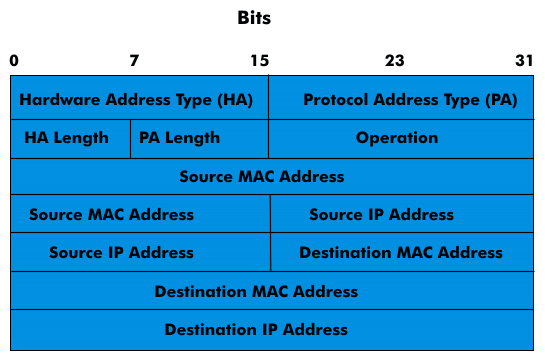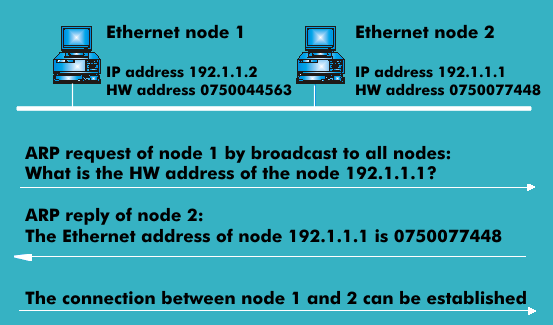address resolution protocol (IP) (ARP)
The Address Resolution Protocol (ARP) is a typical ES-IS protocol, End System to Intermediate System (ES-IS), with which network addresses can be mapped to hardware addresses. For example, MAC addresses can be converted to the corresponding IP addresses so that communication can take place at all on the network layer using the IP protocol.
The ARP protocol creates address tables for this address mapping, which assign the MAC addresses to the network addresses. Before establishing a connection over the Ethernet, the IP protocol queries the Address Resolution Protocol for the Ethernet address of the associated destination Internet address. The ARP protocol compares its address tables with the request.
If ARP has no entry in its table, the Ethernet address of the associated Internet address is requested via a query to all network nodes ( broadcast). Only network nodes with an entry for this IP address respond to the request. The answer to the ARP broadcast is stored in the ARP address table.
Because of the different address lengths of MAC addresses (48 bits) and IP addresses (32 bits) no direct mapping is possible as with other protocols, with the ARP protocol the mapping table is created on the basis of a dynamic query algorithm andchecked regularly.
ARP is a non-routable protocol described in RFC 926 and 1577.


